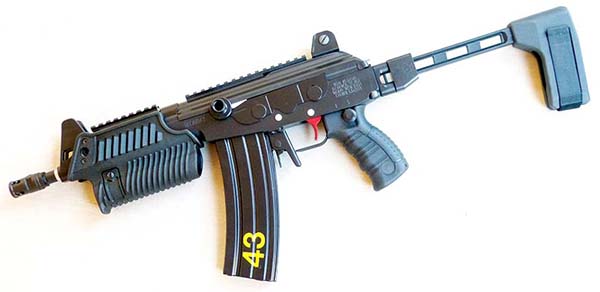Story & Photography by Tom Murphy
The Six-Day War between Israel and Egypt, Jordan and Syria was fought from June 5 to June 10, 1967. During that conflict, the Israel Defense Forces (IDF) captured thousands of AK-47 assault rifles and huge amounts of 7.62x39mm ammunition. At the time, the IDF was armed with the FN FAL battle rifle in 7.62x51mm caliber. This rifle was not suitable for operation in dusty, sandy environments without frequent service; it would jam if not maintained. The AK-47 was seen to be more controllable and reliable and required less maintenance than the FAL. It also was easier to maintain, and the conscript troops needed less training on it.
The IDF realized it needed an assault rifle that would be low maintenance with the accuracy of the FAL, so they looked for a replacement. The M16A1, Stoner 63 and HK33 were tested, but an Israel team consisting of Uziel Gal, inventor of the Uzi, Yakov Lior and Yisrael Galil began testing prototypes towards the end of the 1960s that were based on the Valmet RK 62 receivers. These tests paved the way for the Galil assault rifle chambered for the 5.56x45mm NATO cartridge. The Galil became the official service rifle of the IDF from the mid-1970s to the early 1990s. It was eventually phased out when the M16A1 began arriving in Israel through the U.S. Military Aid Program in 1975.
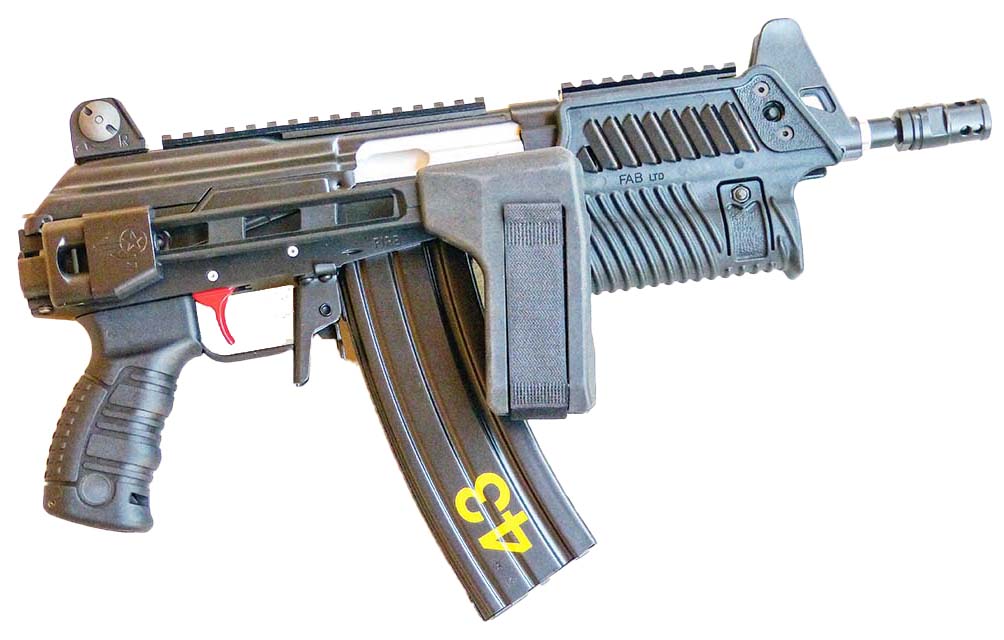
VARIANTS
Numerous variants of the Galil were produced over its lifespan. Here’s a brief summary:
- AR: This is the standard rifle, chambered in 5.56 NATO and 7.62 NATO.
- SAR: This is a short-barreled carbine with either a 13.1-inch barrel in 5.56 NATO or a 15.7-inch barrel in 7.62 NATO.
- ARM: This is a light machine gun in both calibers that is famous for having a bottle opener at the rear of the handguard.
- MAR: This is commonly known as the Micro Galil. It is a smaller version of the SAR. It was downsized by using a shorter 8.27-inch barrel, receiver, gas tube, piston and handguard. Empty weight is 6.57 pounds. The later version of the MAR, the 699, has the charging handle positioned to the left side of the bolt carrier and protrudes through a slot on the left side of the receiver cover. A metal dust shield covers the opening when the bolt is in the forward position. Its barrel is slightly larger at 10.5 inches. This upgrade also extends to the Galil ACE, chambered in 5.56 NATO, 7.62 Soviet and 7.62 NATO.
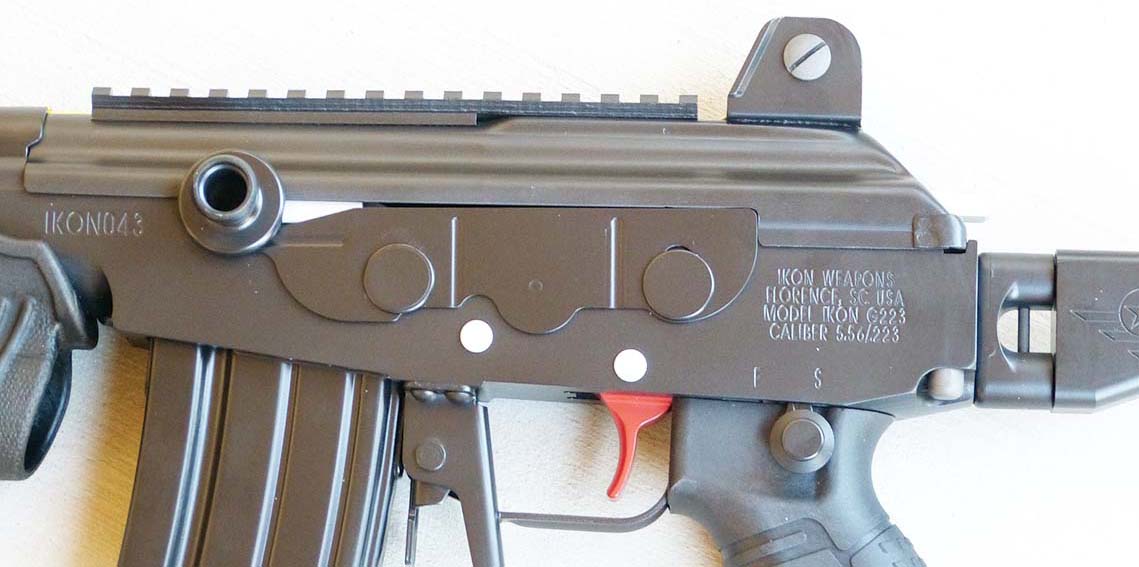
IKON’s One-Off G223
A number of Micro Galil parts kits became available recently. These are original Israel Military Industries (IMI—now known as IMI Systems) parts, except the receivers are not included. IKON Weapons, LLC, headquartered in Florence, SC, has built a one-off G223 pistol using these parts kits. These firearms are truly bespoke weapons; each will be built to the customers’ specifications. IKON won’t be building another one just like the one in this article. The number “43” on the magazine is the gun’s serial number. This version is sold, so another differently configured pistol will replace it.
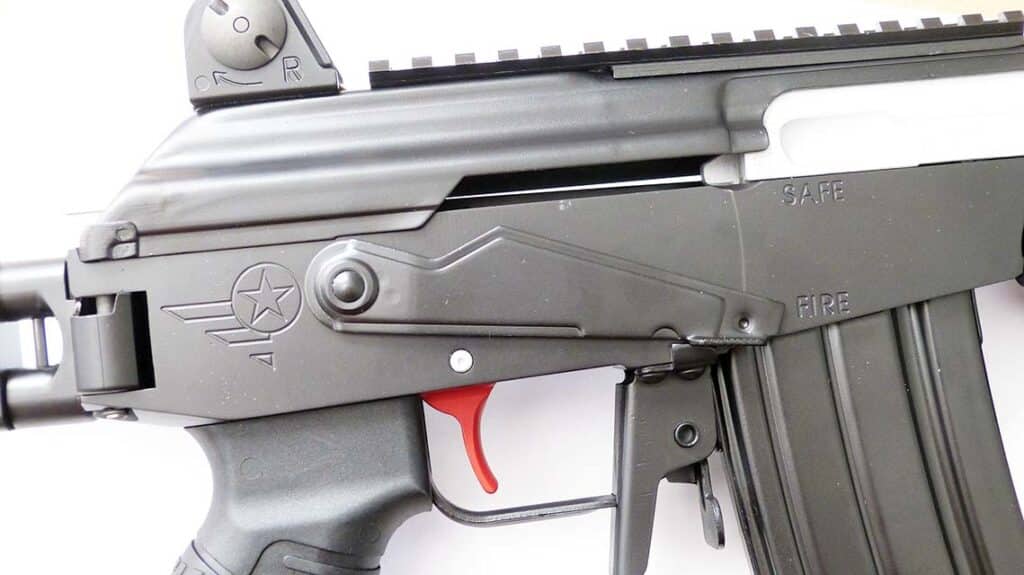
Features
The new receiver has the cocking lever on the left side, similar to the MAR 699. The fire selector is operated by pushing it forward. A two-piece rail is installed on the gas cylinder and receiver cover, making it possible to mount many different styles of optics. The barrel section at the gas port tower is chrome-plated. This prevents gas corrosion of the barrel. The front sight is adjustable for windage and height as per factory specs. Rear sight is windage-only adjustable.
The new receivers are CNC, cut from a 9-pound block of 4140 ordnance steel (containing chromium, molybdenum and manganese). The steel is widely used in firearms construction due to its toughness, high fatigue strength and abrasion and impact resistance. It’s then heat-treated to 45 Rockwell—a hardness scale based on indentation hardness of a material. During the heat treating process, a custom designed insert is used to prevent warping. This insert also allows proper oil quench soak over the entire surface.
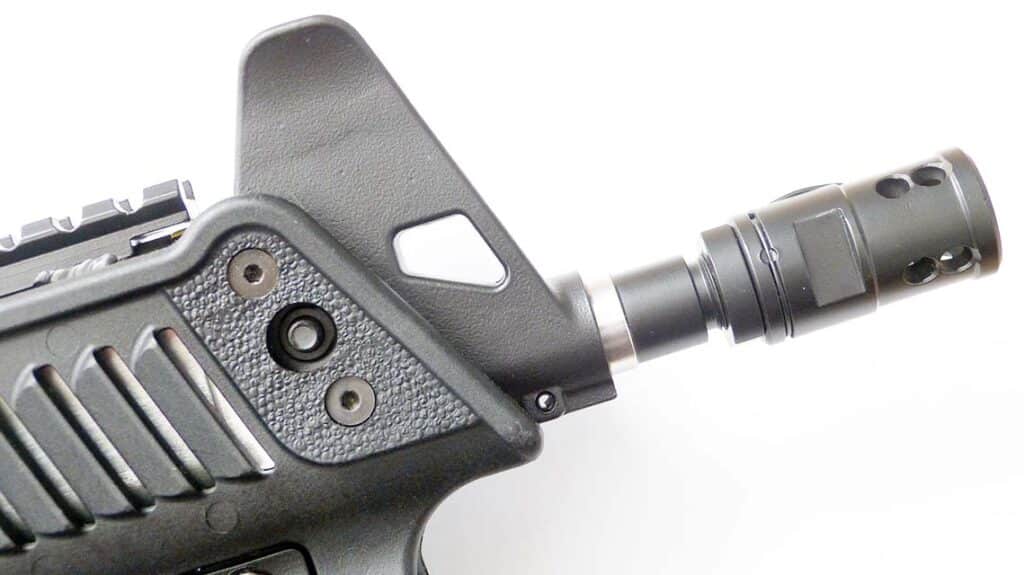
Barrels are fabricated using Green Mountain 1-inch diameter blanks. These are 41V50 chrome moly vanadium steel. Each pistol barrel is indexed to the receiver, and then drilled for the gas port. Headspace is set using a pull-through reamer. As on the OEM weapon, the gas tower is pressed into the barrel. Each firearm has two 10-round mag-azines. The gun is finished with a Cerakote H-series oven-cured, thin-film coating. This provides corrosion, chemical and durability protection. It’s done using a ceramic-polymer technology that imparts both flexibility and physical performance. Cerakote has been used to coat pistons used by Top Fuel Dragster engine builders. It can tolerate operating temperatures up to 1,800 degrees. It is suggested that an operator does not try to fire the Micro Galil at this temperature.
The firearm will be shipped with its original stock. To mount the stock, the gun would have to be registered as a Short Barreled Rifle (SBR) with the ATF. IKON mounts an SB Tactical F1319 brace that gives the gun a 13.5-inch Length of Pull (LOP) so as to conform to current ATF regulations regarding braces and LOP.
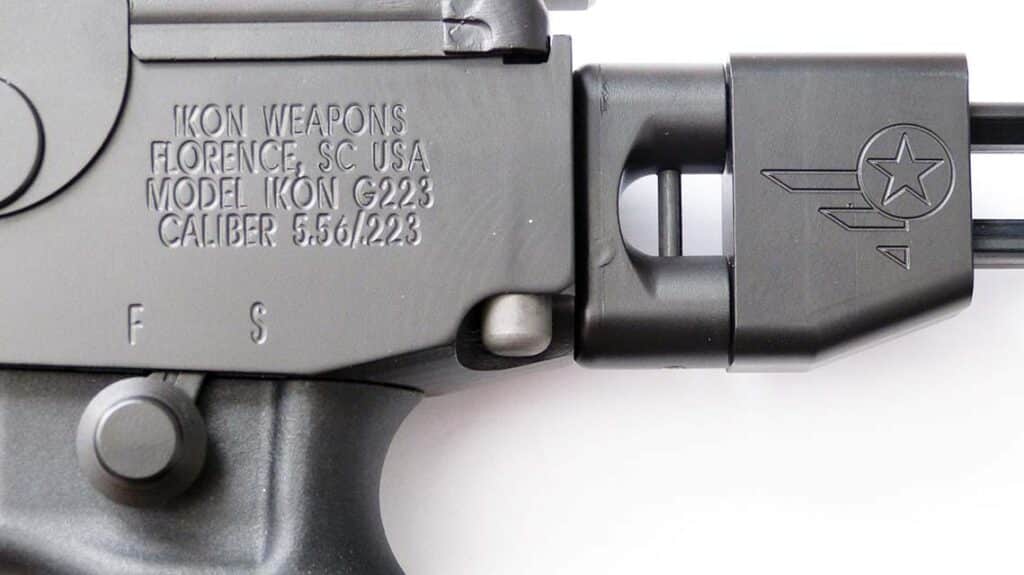
Chrome Moly Barrel Life
A chrome moly barrel should be good for 10,000 rounds. After 7,000 some wear may be present. The barrel can go to 20,000 rounds, but there will be measurable wear to the lands. IKON did a 6,000-round endurance test on one of their Micro Galils. They had 50 magazines and blew through 6,075 rounds in 3.5 hours. The gun was rigidly mounted and then fired by pulling a string tied to the trigger. I would imagine that trigger fingers got rather tired. Suliban Deaza, IKON Weapons’ CEO, measured the front of the barrel temperature at 935 degrees after the last mag was dumped. Back near the receiver, the barrel temps ranged between 287 and 368 degrees.
Considering that most IKON Weapons owners will put less than 1,000 rounds downrange in a year, and at less than 50 yards range, there’s little, or no, chance of losing any discernible accuracy. Two or three trips to the range per month won’t ever cause an accuracy problem.
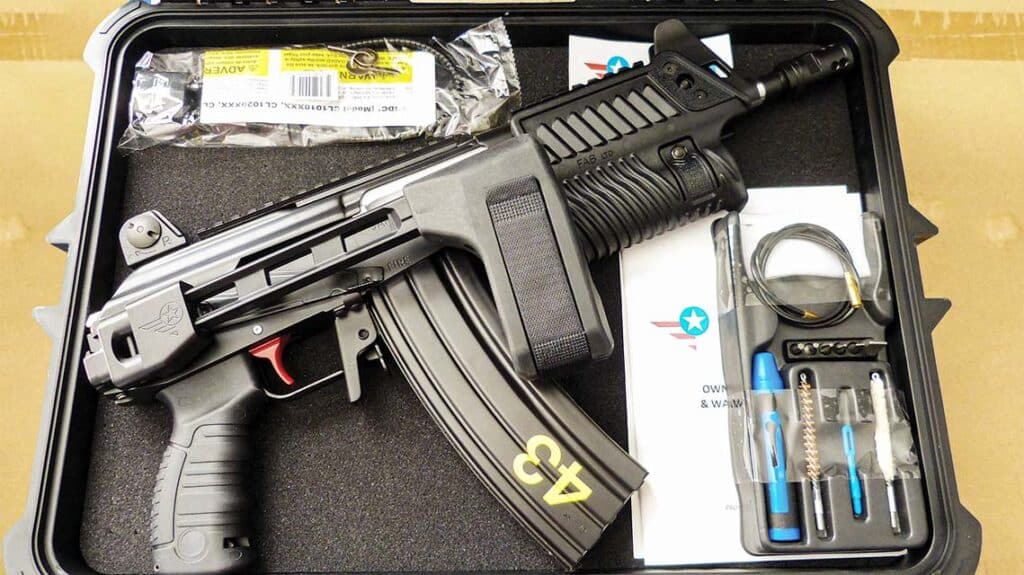
IKON G223
Caliber 5.56 NATO
Operating system Semiautomatic
Magazine NATO STANAG
Mag capacity 30
Barrel Hammer-forged, chrome-lined
Barrel length 8.3in
Weight (empty) 6.4lb
Rate of twist 1:7 Right hand
Sights Tritium adjustable
Info: iconweapons.com
| This article first appeared in Small Arms Review V24N1 (Jan 2020) |



